"Red Dawn" 2011 Trailer “赤色黎明”(红色曙光)电影片段/视频
 陈凯博客: www.kaichenblog.blogspot.com
陈凯博客: www.kaichenblog.blogspot.com"Red Dawn" - The Cinema’s Surprising New Anti-communist Films
"赤色黎明”- 少见的好莱坞反共影片
by Govindini Murty
11/21/2010
For the first time in years, filmmakers in America and around the world are daring to make films criticizing communism. This heartening trend began with 2008’s blockbuster hit “Indiana Jones and the Crystal Skull,” produced by George Lucas and directed by Steven Spielberg, in which Indiana Jones fights Soviet communist agents who are trying to capture an alien crystal skull in order to brainwash the West. The trend continues into 2010 and 2011 with a series of high-profile films that include this summer’s Angelina Jolie thriller “Salt,” Bruce Beresford’s film “Mao’s Last Dancer,” the upcoming “Earth Defense Force” from “Spider-Man” director Sam Raimi, and “The Reluctant Communist” from “Rush Hour” director Brett Ratner. MGM has even jumped into the fray with an action-packed, patriotic remake of the ’80s anti-communist classic, “Red Dawn.”
Conservatives should take heart from these developments because of the surprising fissures they reveal in the formerly monolithic leftist worldview of the film industry.
In the Angelina Jolie spy-thriller “Salt,” for example, the villains are long-dormant Soviet sleeper agents in the US who try to instigate a nuclear war in order to return Russia to communist rule. As its backstory, “Salt” features a secret plot in which a Soviet communist spymaster kidnaps young children and brutally indoctrinates them in a Soviet camp to become Western sleeper agents. The central drama of the film revolves around whether Jolie’s character’s role as one of the Soviet sleeper agents in America will end up siding with the Americans or with the communist Russians once she is “activated” by the communist spy-master. (Spoiler alert: Skip to the next paragraph if you don’t wish to know what happens). Jolie spectacularly and unapologetically takes the side of America and freedom, hunting down and killing the Russian communists.
But this surprising anti-communist trend doesn’t end there. At MGM, a highly anticipated remake of John Milius’ anti-Soviet classic “Red Dawn” has been updated to tell a story of American teenagers fighting off an invasion of America by the communist Chinese. Directed by Dan Bradley, whose credits include directing the action scenes on the “Bourne” films and on the “Spider-Man” films, the new “Red Dawn” has an up-and-coming young cast that includes Chris Hemsworth and Tom Cruise’s son Connor Cruise. When photos from the film’s Michigan shoot were leaked on-line showing scenes of America under a brutal communist Chinese occupation, it sparked a furor that led to Chinese government officials’ denouncing the film. “Red Dawn,” originally slated for release in the fall of 2010, has now been rescheduled for release in 2011.
As for films currently in development, Sam Raimi intends to produce “Earth Defense Force,” a big-budget science-fiction extravaganza that early script reviews indicate will open with America fighting the communist Chinese off the coast of East Asia. Also, Brett Ratner, the bad-boy director of the “Rush Hour” films, has announced that he’s optioned “The Reluctant communist,” the story of an American army deserter who was imprisoned for forty years by the North Koreans and who finally gained release in 2005, eventually writing a memoir repudiating the tyrannical communist regime.
But it isn’t just American blockbusters that are embracing anti-communist themes. On the art-house front as well there is a new trend of films that depict communism’s suppression of freedom, the artist, and the individual.
Academy Award-winning director Bruce Beresford, whose credits include “Breaker Morant” and “Driving Miss Daisy,” has directed an extraordinary new film called “Mao’s Last Dancer,” which is still playing in theaters nationwide. This film tells the true story of brilliant Chinese ballet dancer Li Cunxin, played by handsome ballet star Chi Cao, who defects from communist China to America in 1981. In the film Li Cunxin says of America, “I dance better here because I feel more free.” “Mao’s Last Dancer” includes superb performances by actors Bruce Greenwood, Joan Chen, and Kyle MacLachlan and unapologetically depicts the communist Chinese suppression of artists. Conservatives will also be happy to hear that President Reagan and then Vice-President George H. W. Bush are positively referenced throughout the film for their integral role in negotiating Li’s release from Chinese captivity. According to The Los Angeles Times, “Mao’s Last Dancer” has become an art-house hit that has done especially well in the heartland.
Also in art-house theaters now is the French spy-thriller “Farewell,” which tells the true story of a top Soviet spymaster, played by renowned Yugoslavian director Emir Kusturica, who becomes disillusioned with the Soviet system and decides to hand over its most important intelligence secrets to the West. Ultimately the intelligence is given by the French to the Americans and winds up in the hands of President Reagan. President Reagan would subsequently leverage this information in undermining the Soviet Union. As Reagan himself said, in a quote featured prominently in the film’s trailer, this was “one of the most important espionage cases of the 20th century.” “Farewell” even includes a positive portrayal of Reagan himself, played by veteran actor Fred Ward.
On the documentary film front there are even more riches. “Disco and Atomic War” is a highly-entertaining new Finnish-Estonian documentary released only recently in the US. The film tells the true story of how American-sponsored broadcasts of Western films and TV shows into Soviet Estonia from the 1960s through the 1980s inspired in Soviet citizens an appreciation of Western freedoms that would help bring down the Soviet Union. “Disco and Atomic War” is a paean to the extraordinary “soft power” of Western pop culture entertainments like “Star Wars” and TV shows like “Dallas” and “Knight Rider.” Through beauty, pleasure, and adventure, such American entertainments seduced Soviet audiences into embracing freedom, capitalism, and democracy while repudiating the grim, pleasure-killing Soviet regime.
Other anti-communist documentaries in 2010 that make a powerful plea for freedom include “Tibet in Song,” about a Tibetan filmmaker who was jailed by the communist Chinese for daring to record traditional Tibetan folk songs; “Enemy of the People,” an uncompromising look at the communist Khmer Rouge regime in Cambodia, directed by a Cambodian filmmaker whose own family members were killed by the regime; “The Autobiography of Nicolae Ceausescu,” a revealing look at the Romanian communist dictator; and “The Red Chapel” and “Kimjongilia,” two devastating critiques of the inhuman North Korean communist regime.
Finally, Wang Bing’s drama “The Ditch” tells the true story of 3,000 Chinese political “rightists” who were deported by the Chinese communist government for “re-education” in labor camps in the remote Gobi desert, where many of them died of disease and starvation. “The Ditch” was a surprise hit at the 2010 Venice Film Festival and was a serious contender for its top prize.
Dissent against the Left is now possible within both Hollywood and the independent-film community. Many talented artists are now bravely speaking out against the totalitarian evils of communism and are creating exciting and innovative new films. Conservatives should find inspiration in these films and should also see them and support them. Films like “Salt,” “Mao’s Last Dancer,” and “Disco and Atomic War” show that popular culture is not lost—and in fact can never be lost—as long as there are talented artists willing to speak out for freedom.
(Mrs. Murty is an independent filmmaker, co-artistic director of the Liberty Film Festival, and a contributor to LIBERTAS, the premier on-line forum for conservative discussion on film.)






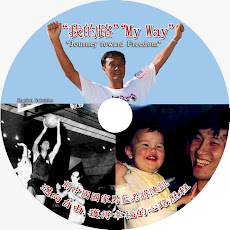







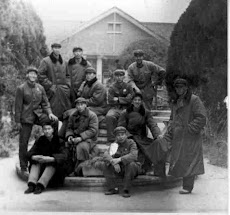


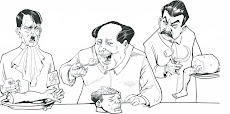
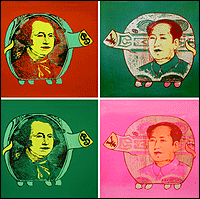
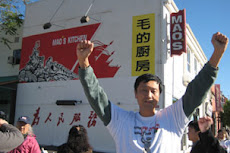


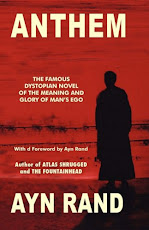










No comments:
Post a Comment